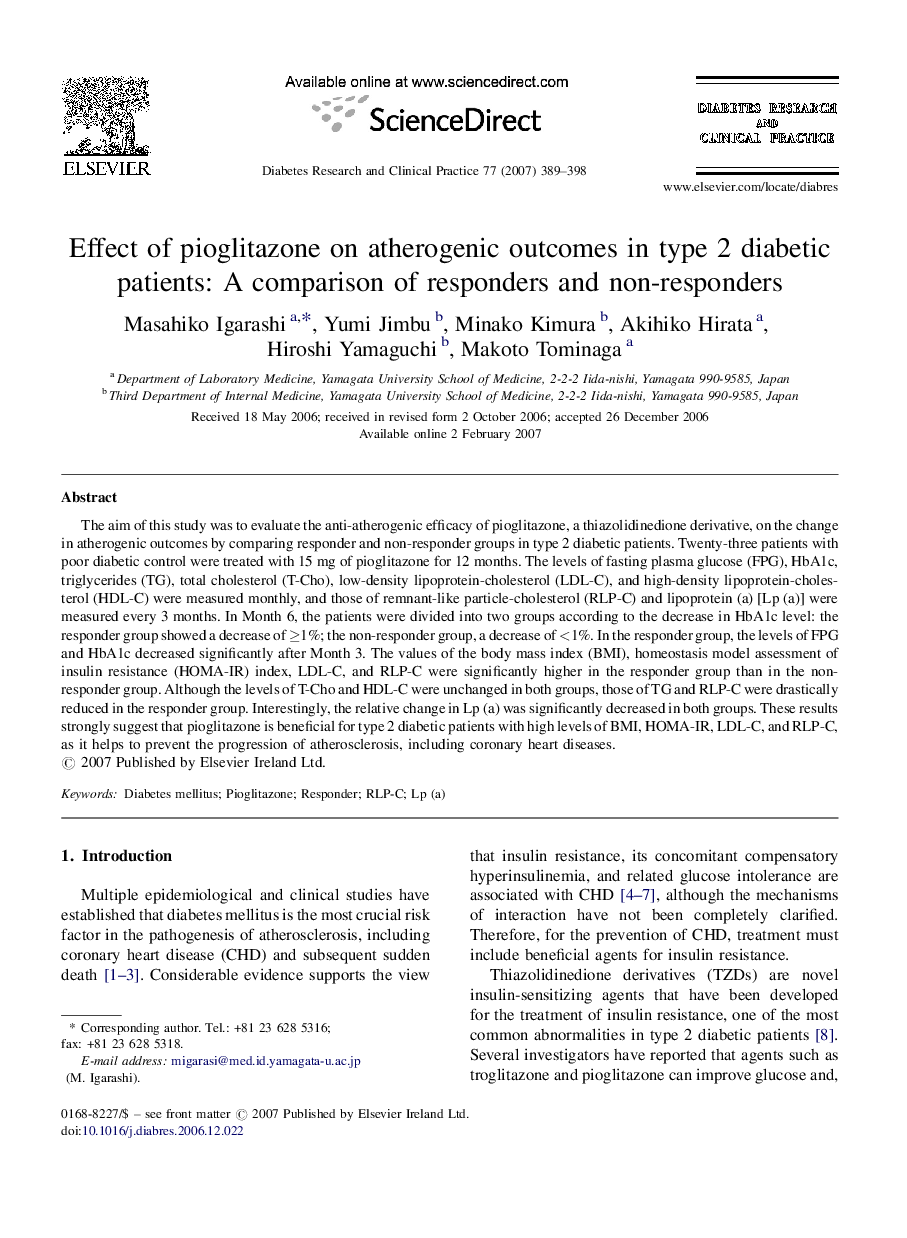| Article ID | Journal | Published Year | Pages | File Type |
|---|---|---|---|---|
| 2798596 | Diabetes Research and Clinical Practice | 2007 | 10 Pages |
The aim of this study was to evaluate the anti-atherogenic efficacy of pioglitazone, a thiazolidinedione derivative, on the change in atherogenic outcomes by comparing responder and non-responder groups in type 2 diabetic patients. Twenty-three patients with poor diabetic control were treated with 15 mg of pioglitazone for 12 months. The levels of fasting plasma glucose (FPG), HbA1c, triglycerides (TG), total cholesterol (T-Cho), low-density lipoprotein-cholesterol (LDL-C), and high-density lipoprotein-cholesterol (HDL-C) were measured monthly, and those of remnant-like particle-cholesterol (RLP-C) and lipoprotein (a) [Lp (a)] were measured every 3 months. In Month 6, the patients were divided into two groups according to the decrease in HbA1c level: the responder group showed a decrease of ≥1%; the non-responder group, a decrease of <1%. In the responder group, the levels of FPG and HbA1c decreased significantly after Month 3. The values of the body mass index (BMI), homeostasis model assessment of insulin resistance (HOMA-IR) index, LDL-C, and RLP-C were significantly higher in the responder group than in the non-responder group. Although the levels of T-Cho and HDL-C were unchanged in both groups, those of TG and RLP-C were drastically reduced in the responder group. Interestingly, the relative change in Lp (a) was significantly decreased in both groups. These results strongly suggest that pioglitazone is beneficial for type 2 diabetic patients with high levels of BMI, HOMA-IR, LDL-C, and RLP-C, as it helps to prevent the progression of atherosclerosis, including coronary heart diseases.
